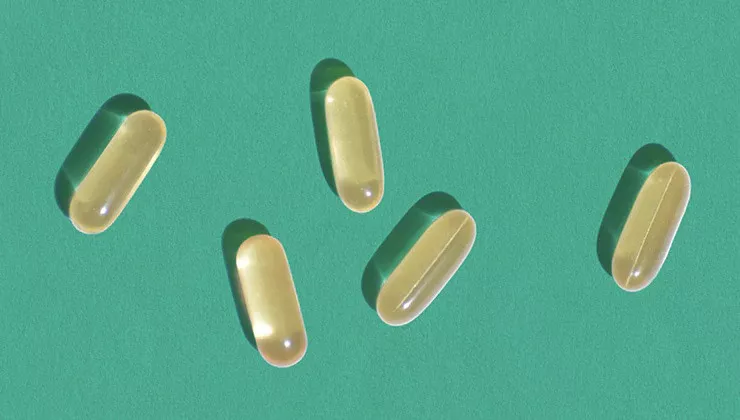Scars are a natural part of the healing process, forming as the body repairs damaged skin. Over time, they typically fade in appearance and become less noticeable. However, many people wonder whether a healed scar can be reopened or damaged, particularly if the area is subjected to trauma or irritation. This concern is valid, as the healing process is complex, and scars can still be vulnerable long after the wound appears to have fully healed. In this article, we will explore the question of whether a healed scar can reopen, the factors that influence this process, and how to care for healed scars to avoid complications.
Scars and the Healing Process
Before delving into the specific risks associated with reopened scars, it’s important to understand how scars form and what the healing process entails. When the skin is injured, the body initiates a process to repair the damaged tissue. Initially, this process involves the formation of a clot to stop the bleeding, followed by the growth of new skin cells to close the wound. Over time, the body works to rebuild the affected area, producing collagen, a protein that helps to strengthen and support the new tissue. As the wound heals, it gradually becomes covered by a scar.
The scar tissue is not identical to the original skin. It is typically thicker, denser, and less flexible than normal skin. During the healing process, the body may overproduce collagen, leading to raised scars, such as hypertrophic scars or keloids. Conversely, underproduction of collagen can result in atrophic scars, which are indented and appear sunken.
As the wound heals, it eventually forms a “mature” scar, which can take anywhere from several months to years to fully develop. Once a scar is fully matured, the body has completed its repair process, and the scar tissue becomes more stable. However, while scars are permanent, they can still be affected by certain factors, such as external trauma or internal changes.
Can a Healed Scar Be Reopened?
The short answer is yes, a healed scar can be reopened under certain conditions. While scar tissue is more resilient than fresh wounds, it remains more vulnerable to injury than healthy skin. When a scar is subjected to excessive pressure, friction, or trauma, there is a risk that the scar tissue could rupture or split. This may occur in cases of physical activity, accidents, or improper handling of the scar area.
However, the likelihood of a healed scar reopening depends on several factors, including the scar’s age, location, and the underlying tissue’s strength. While scars may appear to be healed on the surface, the tissue underneath may still be weaker than the surrounding skin. The new collagen produced during the healing process may not have fully integrated with the surrounding tissue, making the scar area more prone to re-injury.
Factors That Influence Whether a Healed Scar Can Open
Several factors influence whether a healed scar can reopen. These include the type of scar, the location of the scar, and the type of activity or external pressure placed on the scar. Below are some key factors to consider:
1. Type of Scar
The type of scar plays a crucial role in determining its strength and susceptibility to reopening. Hypertrophic scars and keloids, which are raised, thick scars, are more likely to remain vulnerable to injury than flat, atrophic scars. This is because hypertrophic scars and keloids tend to have an excess of collagen, which can make them more rigid and prone to tension. Any movement or stretching of the skin in these areas could potentially cause the scar to reopen or become aggravated.
Atrophic scars, on the other hand, are softer and less likely to reopen but may still be susceptible to irritation or trauma. These scars are often more fragile and may reopen if the skin is stretched excessively or subjected to a sudden impact.
2. Scar Location
The location of the scar also influences the likelihood of it reopening. Scar tissue on areas of the body that experience frequent movement or stretching, such as the joints, knees, elbows, or abdomen, are at a higher risk of reopening. Movement or stretching in these areas can put significant tension on the scar tissue, especially if the scar is still in the remodeling phase or has not fully matured.
Scars located on parts of the body that are less mobile or exposed to frequent friction, such as the back or scalp, may be less prone to reopening, but they are not immune. Even small amounts of pressure or irritation can cause damage to the scar tissue, particularly if the skin is thin or if the scar was not well-healed in the first place.
3. Age of the Scar
The age of the scar is a significant factor in determining its vulnerability. Scars undergo a process of remodeling over time, where collagen continues to mature and the tissue strengthens. Fresh scars, particularly those that are less than a year old, are more prone to reopening than older, more mature scars. This is because the collagen in newer scars has not fully matured, making the tissue more elastic and vulnerable to stretching.
As a scar ages, it becomes stronger and more integrated with the surrounding tissue. However, even older scars can reopen if subjected to significant force or stress. For example, a scar that is several years old could still reopen if the area experiences a severe impact or a stretching force that exceeds the scar’s tolerance.
4. External Factors and Irritation
External factors can also play a significant role in whether a healed scar can reopen. Sun exposure, friction, and improper skincare can all contribute to scar irritation and potential reopening. Sunburn or excessive heat can make scar tissue more fragile and prone to damage, especially if the scar is located on an area that is frequently exposed to the sun. Scars can also become irritated by friction from clothing, jewelry, or other objects that come into contact with the skin.
Improper skin care, such as using harsh chemicals or neglecting to moisturize the scar, can also weaken the tissue and make it more susceptible to reopening. Using silicone gel sheets or other scar treatments can help protect and strengthen the scar, reducing the risk of re-injury.
5. Health and Healing Factors
Your overall health and how well your body heals can influence the strength of scar tissue. Factors such as age, nutrition, and the presence of certain medical conditions (e.g., diabetes, immune system disorders) can affect the healing process. For example, individuals with diabetes may experience delayed wound healing, which can leave scars more vulnerable to reopening. Additionally, smoking and poor nutrition can impair collagen production and slow down the healing process, making scars weaker and more prone to re-injury.
How to Prevent a Healed Scar from Reopening
While it is impossible to guarantee that a scar will never reopen, there are several strategies you can employ to minimize the risk of injury:
1. Avoid Excessive Stretching or Tension
Avoid activities that involve excessive stretching or tension in the scar area, especially if the scar is located on a joint or an area that is prone to movement. If possible, protect the scar from direct trauma by wearing protective clothing or padding. For example, if you have a scar on your knee, consider wearing knee pads during physical activities to reduce the risk of reopening the scar.
2. Keep the Scar Moisturized
Moisturizing the scar area is essential for maintaining its flexibility and preventing dryness or cracking. Using a gentle, hydrating lotion or scar treatment product can help keep the scar tissue supple and less prone to damage. Silicone-based products are especially effective in promoting scar healing and reducing the risk of reopening.
3. Avoid Sun Exposure
Sun exposure can make scar tissue more vulnerable to damage, so it is essential to protect the scar from the sun’s harmful UV rays. Use sunscreen with a high SPF on the scar, or consider covering it with clothing or a bandage if you are going to be outside for extended periods.
4. Monitor for Signs of Irritation
Regularly check the scar for any signs of irritation, redness, or swelling. If you notice any changes in the appearance of the scar, seek medical advice to prevent complications. If the scar becomes itchy or painful, it may be a sign of irritation or infection, which can increase the risk of reopening.
5. Consult a Healthcare Professional
If you are concerned about the risk of reopening a scar or if you experience any complications, it is always best to consult a healthcare professional. A dermatologist or plastic surgeon can provide personalized advice and treatment options to protect your scar and improve its appearance.
Conclusion
While scars are a natural part of the healing process, they can remain vulnerable to reopening under certain conditions. Factors such as the type of scar, the location, the age of the scar, and external factors like sun exposure or friction can all influence whether a healed scar can reopen. By taking proper precautions, such as avoiding excessive tension on the scar, moisturizing the area, and protecting it from the sun, you can reduce the risk of scar reopening and help ensure the best possible healing outcome. If you are concerned about your scar or experience any complications, it is important to seek professional advice to address the issue and prevent further damage.
Related Topics





























